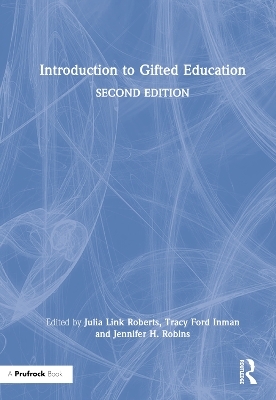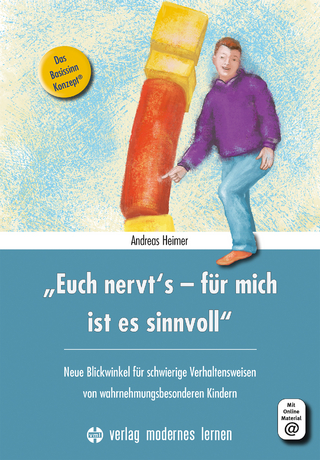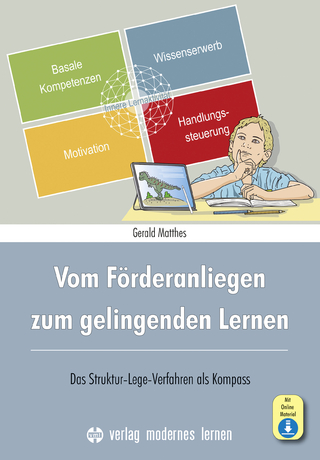
Introduction to Gifted Education
Prufrock Press (Verlag)
978-1-64632-199-5 (ISBN)
Chapters cover topics such as gifted education standards, social-emotional needs, cognitive development, diverse learners, identification, programming options, creativity, professional development, and curriculum. The book provides a comprehensive look at each topic, including an overview of big ideas, its history, and a thorough discussion to help those new to the field gain a better understanding of gifted students and strategies to address their needs.
Filled with rich resources to engage readers in their own learning, Introduction to Gifted Education, Second Edition is the definitive textbook for courses introducing teachers to gifted education.
Julia Link Roberts is the Mahurin Professor of Gifted Studies at Western Kentucky University. She is Executive Director of The Center for Gifted Studies at Western Kentucky and The Gatton Academy of Mathematics and Science and is past president of the World Council for Gifted and Talented Children and The Association for the Gifted. Tracy Ford Inman is a consultant specializing in differentiation, assessment, and parenting gifted children. She has been the author/editor of four Texas Association for Gifted and Talented Legacy Award-winning books. Jennifer H. Robins is the Director of the Center for Gifted Education and Talent Development and a Clinical Assistant Professor in the Department of Educational Psychology at Baylor University. She is Co-Editor of the Journal for Education of the Gifted.
Introduction, Section I: Getting Started, 1. Conceptual Frameworks in Gifted Education as the Foundation for Services: The Necessity for Design Alignment [Ann Robinson], 2. History of Gifted Education [Jennifer L. Jolly and Jennifer H. Robins], 3. Standards in Gifted Education [Susan K. Johnsen], Section II: The Gifted Learner, 4. Characteristics of Gifted Learners [Lynette Breedlove], 5. Social and Emotional Development [Anne N. Rinn and Leah K. Murph], 6. Development of Children With Superior Cognitive Abilities [Erin M. Miller, Jennie M. Carr, and Jenny M. Martin], Section III: The Basics for Advanced Learning, 7. Best Practices in Gifted Identification [Jessica K. Ottwein, Lindsay Ellis Lee, Scott J. Peters, and Dante D. Dixson], 8. Transforming Potential Into Exceptional Achievement: Curriculum Design in Gifted Education [Todd Kettler and Maryann R. Hebda], 9. Assessment for Gifted Students [Todd Stanley], 10. Designing the Learning Environment for Gifted Students [Thomas P. Hébert], 11. The Learning Environment at Home: Parents and Families [Michael S. Matthews and Jennifer L. Jolly], Section IV: Programming for Advanced Learning and Talent Development, 12. Enrichment: In and Out of School [Kristen R. Stephens], 13. Acceleration: Practical Applications and Policy Implications [Susan Assouline and Ann Lupkowski-Shoplik], 14. Effective Differentiation for Continuous Progress [Tracy Ford Inman and Julia Link Roberts], 15. Talent Development as a Framework for the Delivery of Services to Gifted Children [Paula Olszewski-Kubilius, Rena F. Subotnik, Frank C. Worrell, and Dana Thomson], 16. Creativity [Kristen N. Lamb and Dianna Dekelaita-Mullet], Section V: Diversity of Learners, 17. Understanding Underachievement [Del Siegle], 18. Margins No More: Centering the Needs of Minoritized Students in Gifted Education [Brittany N. Anderson and Tia C. Dolet], 19. Students With Gifts, Creativity, and Talents From Low-Income Families [Kristen Seward and Marcia Gentry], 20. The Interplay Between Geography and Giftedness [Tamra Stambaugh], 21. Resisting the Void: Transforming the Invisible to Visible for Gifted LGBTQ+ Students [Alena R. Treat and Orla Dunne], 22. Multilingual Learners With High Academic Potential [Nielsen Pereira and Luciana C. de Oliveira], 23. Meeting the Needs of Students Who Are Twice-Exceptional [Daphne Pereles, Mary Ruth Coleman, Lois Baldwin, and Stuart Omdal], Section VI: Improving Services for Gifted Learners: Moving Forward, 24. Professional Learning: A New Look [Christine L. Weber and Angela M. Novak], 25. Policy in Gifted Education [Jonathan A. Plucker], 26. Advocacy [Julia Link Roberts]
| Erscheinungsdatum | 23.06.2022 |
|---|---|
| Zusatzinfo | 32 Tables, black and white; 23 Line drawings, black and white; 13 Halftones, black and white; 36 Illustrations, black and white |
| Sprache | englisch |
| Maße | 178 x 254 mm |
| Gewicht | 453 g |
| Themenwelt | Sozialwissenschaften ► Pädagogik ► Sonder-, Heil- und Förderpädagogik |
| ISBN-10 | 1-64632-199-5 / 1646321995 |
| ISBN-13 | 978-1-64632-199-5 / 9781646321995 |
| Zustand | Neuware |
| Haben Sie eine Frage zum Produkt? |
aus dem Bereich


